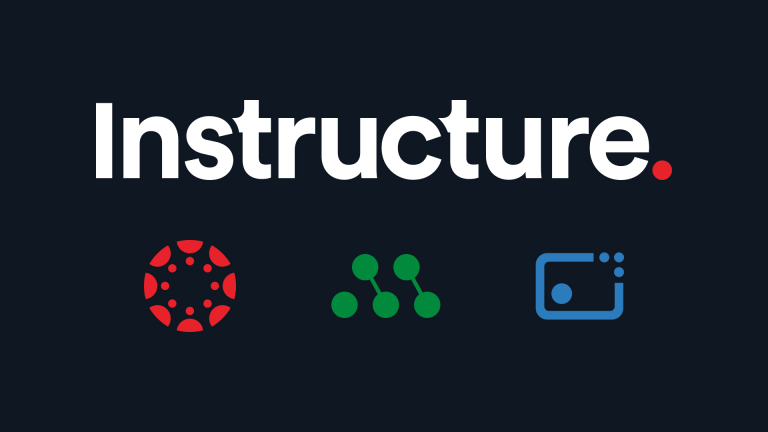*Editor's note: This article originally appeared in The Chronicle, the student newspaper of The College of Saint Rose in Albany, New York. It is republished with permission.
Among changes to make Saint Rose be a “Home away from Home,” the College has updated students’ educational experience by transitioning online classroom forums from Blackboard Learn to Canvas Learning Management System.
Canvas was designed as a learning system aimed towards higher education and to be user friendly, according to John Ellis, Associate Vice President for Informational Technology Services and Facilities. Faculty complaints over the past two to three years prompted the Academic Technology Committee (ATC) and ITS to look into alternative sources for online learning. “Canvas offers flexibility and the ability to design their online class presence to best fit their pedagogical needs,” said Ellis.
Ellis explained that Blackboard was often limited with external tools and applications, as well as offering a space for teachers to create a classroom best suited for their style of teaching. In comparison, Canvas allows students to connect with other applications such as Google Drive, Microsoft 360, Youtube, and Vimeo. Canvas also allows teachers to better set due dates, send reminders, list expectations, and be clear about student performances and grades.
“When it’s easier for faculty to use, they will want to use it. When they use it, our students benefit. We have found that each of the small components, such as the grade book, rubrics, to-do lists, messaging, and the mobile apps are more flexible and intuitive. Notifications are more robust so students can receive automatic push notifications through the app or via SMS when due dates are approaching, content has changed, etc,” said Thomas Rosenberger, Director of Online Learning Services at Saint Rose.
“As a result, we are already seeing a renewed sense of interest in the LMS among our faculty. This is exciting because this is what our students want.”
Some students have explained that Canvas is better than Blackboard because it’s more user friendly and organized. Hannah Deetz, a junior at Saint Rose, is using Canvas for her education and english courses. She said that after three years of attending classes at Saint Rose she became used to using Blackboard, but now she suddenly has to learn how to use a new platform. “I love Canvas though, it just takes time to remind yourself that just about everything is on Canvas now,” said Deetz.
Deetz further explained that Canvas is more interactive. One feature that she admires is that professors can make threads private from showing other students comments until the student posts their own. She said that this eliminates the possibility of other students copying each others ideas. In addition, Deetz likes how organized the dashboard is on Canvas because she can see all of her courses, what assignments are due soon, and her grades.
One the other hand, one student feels that transitioning into Canvas should have been slower. John Robert Graham said that though he’s not against the transition, he feels that the college should have only transitioned the freshmen while allowing upperclassmen to finish their career on Blackboard.
“When it’s easier for faculty to use, they will want to use it. When they use it, our students benefit...As a result, we are already seeing a renewed sense of interest in the LMS among our faculty. This is exciting because this is what our students want.”
“I prefer Blackboard as of now, but may change my mind as i get used to Canvas,” said Graham.
While both Canvas and Blackboard seem to offer the same things, there are things that Blackboard does that Canvas doesn’t. On John’s Iphone 5C. Blackboard operates on his safari app and Canvas doesn’t. In addition, Graham says that Canvas is set up much more straightforward than Blackboard, but it still takes time to get accustomed to.
Student experience and preference for the transition is something that ITS gathered student input about in a technology survey conducted at the end of the Spring 2018 semester. Over several years, students have expressed that they wanted more consistent access to class material and the ability to track their performance throughout the semester, according to Rosenberger. Faculty had also expressed concern and struggled with Blackboard because of usability issues.
In addition to these two concerns presented by the college community, Ellis explains that switching over to Canvas would be less costly than staying with Blackboard. There is about a $30,000 cost difference, according to Ellis.
According to Rosenberger, ITS divided the transition into Canvas into two waves. The first wave includes: Teacher Education, Educational & School Psychology, Counseling, College Student Services Administration, Ed Leadership, Literacy & Special Education, Communications, English (full time), Philosophy & Religious Studies, World Languages, Computer Science (full time), Criminal Justice, Physical Education, and Social Work. All other majors are expected to make the full transition by Summer 2019.
Professors teaching these courses were given the option to partake in intensive training sessions over the summer to learn how to use the new product. Ellis explains that many faculty showed up to the trainings. Though there are some teachers that are not as willing to transition over, Ellis hopes that professors who like the program will spread the good word about Canvas.
“I think the beginning of the year is the best time because the new students will have an easier time transitioning and it gives us students who have already been here, time to adapt and adjust to the new program,” said Deetz.
Related Content
 inst-3step.jpg
inst-3step.jpgBlogs
 inst-default
inst-defaultBlogs
 ai_blog_1.jpg
ai_blog_1.jpgBlogs
